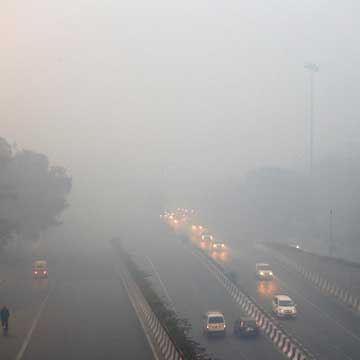 New Delhi:
New Delhi: Delhi NCR's air quality deteriorates with unfailing regularity at this time of the year, with large swathes of north India in the grip of a suffocating smog, but the State governments that can make it easier for millions to breathe do not act with any sense of urgency. That it has turned into a public health emergency in the capital, with the air quality index touching extremely hazardous levels in some parts, necessitating the closure of primary schools, has further lowered its standing.
It is unconscionable for governments, through indifference and inaction, to subject citizens to such toxic air, and cause extreme suffering especially among people with respiratory ailments and impaired lung function. The smog that envelops the region is exacerbated by the burning of biomass in Punjab and Haryana, and the winter atmosphere is marked by weak ventilation.
An analysis of local sources by IIT-Kanpur last year pointed to construction dust, vehicular pollution, and domestic and industrial emissions as other major factors. Clearly, the burden of such chronic problems has outweighed the benefits conferred by measures such as the ban on Deepavali crackers, and in the past, the shift to compressed natural gas for commercial vehicles and restricting car use to odd and even number plates on alternate days. A comprehensive solution demands that the governments of Delhi, Punjab, Haryana and Uttar Pradesh, assisted by the Centre, address farm residue burning and construction dust.
The post-monsoon — as opposed to pre-monsoon — burning of rice and wheat residue releases maximum aerosols that contribute to the volume of PM2.5, which gets embedded in the lungs. Automation of farm operations leaves root-bound crop waste after machine harvesting, running to millions of tonnes, requiring a solution of scale. Sustainable residue removal cannot be achieved by the farmers alone, and requires help from the state machinery. Here, Delhi Chief Minister Arvind Kejriwal should be commended for his initiative to discuss the modalities of joint action with the Punjab and Haryana governments.
The national capital needs a major greening effort. Unpaved surfaces raise dust levels as in all Indian cities, but civic agencies ignore the problem. There is every reason to think that even the Ministry of Environment’s orders issued in 2015 under the Air (Prevention and Control of Pollution) Act, 1981 to comprehensively green Delhi’s road margins and open spaces were not pursued seriously.
Shifting more of the city’s travel to comfortable public transport can cut fine particulates in congested areas and improve the air for residents. Many such initiatives were taken up by China in its cities to reduce exposure to PM2.5 that produces morbidity from cardiovascular and respiratory diseases and leads to premature death. Only a determined response to the crisis can spare Delhi of its infamous tag as one of the most polluted cities on the planet.
 New Delhi: Delhi NCR's air quality deteriorates with unfailing regularity at this time of the year, with large swathes of north India in the grip of a suffocating smog, but the State governments that can make it easier for millions to breathe do not act with any sense of urgency. That it has turned into a public health emergency in the capital, with the air quality index touching extremely hazardous levels in some parts, necessitating the closure of primary schools, has further lowered its standing.
New Delhi: Delhi NCR's air quality deteriorates with unfailing regularity at this time of the year, with large swathes of north India in the grip of a suffocating smog, but the State governments that can make it easier for millions to breathe do not act with any sense of urgency. That it has turned into a public health emergency in the capital, with the air quality index touching extremely hazardous levels in some parts, necessitating the closure of primary schools, has further lowered its standing. 